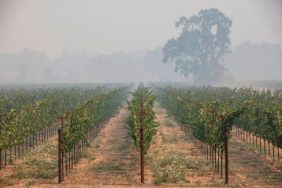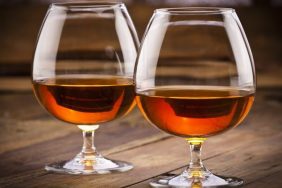Photo: Walter Bibikow (Getty Images).
Technically, Cognac is a high-quality distilled brandy named after Cognac, France. To be called cognac, the product must be made in Cognac, France with grapes grown in the region (just like Champagne must be made in the Champagne region in France and Tequila must be made in the Tequila-area of Mexico).
Only brandy made in the Charente region of southwest France can be considered Cognac (i.e., be a product made from grapes grown exclusively in the delimited region of Cognac). “Moreover, the wine must be produced by one of the specific white grape varieties, and undergo double-distillation in traditional copper Charentais stills, and that distillation must take place between November 1 and March 31 after the harvest,” says Jordan Bushell, Head of Mixology and Brand Education at Hennessy. Last but certainly not least, Cognac must be aged for at least 24 months in oak and be a blend of at least two eau-de-vie.
The History of Cognac
The history of Cognac goes all the way back to the 16th century. “Dutch merchants came to Cognac in the 16th century to purchase salt, wood and wines,” says Bushell.
Transporting the wines proved difficult, so the Dutch worked with the French on a process called distillation, which turned the wines into eau-de-vie, a solution for preserving the wines over long distances. “However, it was later discovered that if the wine was distilled a second time, it made for an even finer, more elegant product. And thus, that’s how brandy (and Cognac) was born.” Double distillation was pioneered in Cognac and is a process used around the world to make many different spirits today.
Also: 5 Cocktails Inspired by Classic Films
The Most Well-Known Cognac Houses
They are Hennessy, Courvoisier, Rémy Martin and Martell. Although, you can also find Cognac Park and many other brands on the market in the US.
How Cognac Is Made

Photo: Luis Davilla (Getty Images).
“After being distilled twice in copper stills, Hennessy keeps its eau-de-vie in barrels made from 200-year-old oaks for a minimum of two years, often much longer,” says Bushell. The eau-de-vie is tasted each year to assess its quality. “When the eau-de-vie has completed the aging process, it is placed in demijohns, also known as glass bottles.”
Blending is the final art in producing Cognac. “Hennessy has honed this art over time,” says Bushell. “For over two centuries, seven generations of Master Blenders from the Fillioux family have dedicated their lives to composing exceptional nectars, enriching the heritage of the Maison Hennessy and passing it on to their descendants,”
The Different Kinds of Cognac
VS (Very Special) indicates that the youngest eaux de vie in the blend is at least two years old. VSOP (Very Superior Old Pale) indicates that the youngest eaux de vie in the blend is at least four years old. XO (Extra Old) indicates that the eaux de vie must be at least six years old. Vintage is made from grapes that were extracted from a single harvest.
There Are Way More Cognac Producers Than You Think
“There are over 700 that produce eau-de-vie for sale to the different brands,” says Bushell.
Cognac Isn’t Too Fancy For You
This reputation came from the aristocracy because they were the only people who could afford to drink it at the time. When phylloxera hit all of Europe in the 1860s and destroyed much of the crops, France lost more than 70% of its Cognac-producing grapes. This is when people began shelling out large sums of money to buy it. It’s had a “fancy” reputation ever since.








